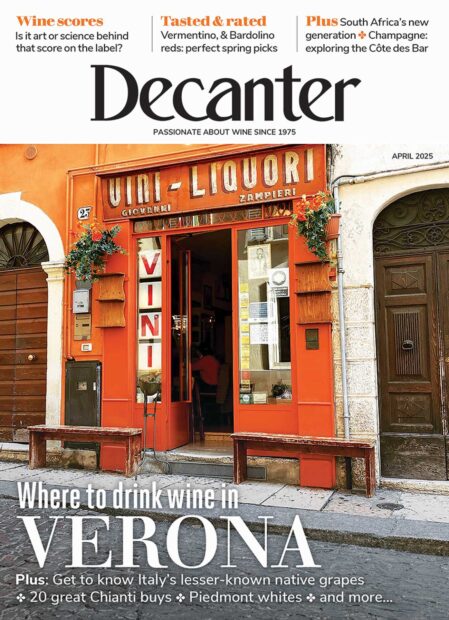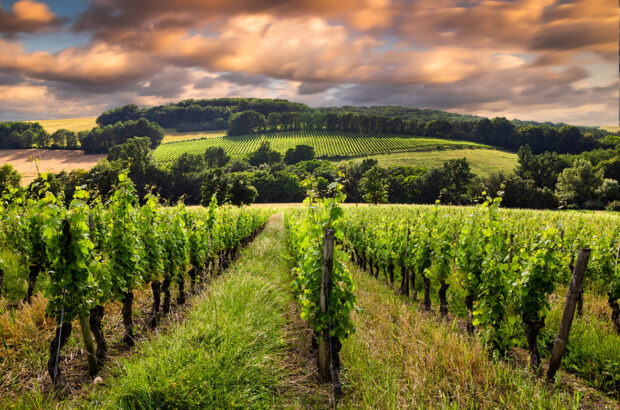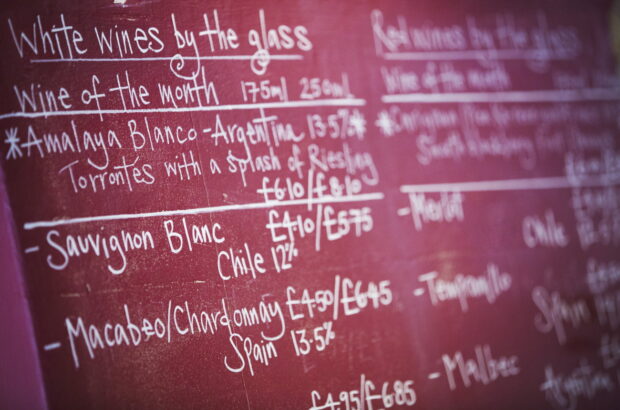A decade is no time at all in wine and everyone will have their own perspective on the 2010s, but we’d argue that the last 10 years have been pretty eventful.
We’ve seen vintages lauded as greats, such as California Cabernet in 2013, Northern Rhône in 2015, Southern Rhône in 2016 and a wealth of top wines from 2010 itself, from Bordeaux to Rioja and Barolo to Barossa – to name just a few.
There is currently much excitement around Champagne’s class of 2018, and the same goes for English sparkling wine, while anticipation for Burgundy 2019 recently drove up prices at the Hospices de Beaune auction.
But there have also been tough lows, and not least from the intensity of extreme weather, such as wildfires, hailstorms, frost and drought, which have heightened anxiety about climate change and tension over resource use.
Prosecco and rosé wines have stormed the stage in the 2010s, and not just because they look good on Instagram – which incidentally only entered our lives as winemakers across the northern hemisphere picked grapes for the 2010 vintage.
Many will view the stepping-back and subsequent retirement of Robert Parker Jr as a major moment, but other readers might identify the decade more readily with the rise of ‘natural wines’.
There have also been high-profile news stories, from the historic fine wine fraud conviction against Rudy Kurniawan to Brexit and, as it stands, arguably the most uncertain period for global trade policy in a generation or more.
At Decanter we’ve received roughly one press release every 30 minutes on what millennials really think about wine, or so it seems.
Concepts of restraint, precision and a granular focus on plot-by-plot vineyard management have arguably become more entrenched in winemaking philosophy in the last decade, backed by analytical technology, including drones.
Oak is hardly over, but has continued to become a more subtle influence and we have seen experimentation with different vessels, from concrete eggs to Georgian-style qvevri – which formed part of a UNESCO listing for Georgian wine.
Here are a few other key themes that we’d pick out, with the environment playing a large role.
US vs China
There’s a case for the 2010s being an American story, after the US began the decade by becoming the world’s biggest wine consuming nation.
It has held this position ever since, according to figures from the Organisation of Vine & Wine (OIV). Growth in recent years has come from premium wines, classed by Silicon Valley Bank as above $10 per bottle at retail.
But then developments in China have also been fascinating to watch.
Many winemakers now know their WeChat from their Whatsapp, while Moët Hennessy and the owner of Lafite Rothschild are both making wine in different parts of China – which is quite a statement. See our exclusive articles on Ao Yun and Long Dai winery respectively.
Learning about wine
The Wine & Spirit Education Trust said this year that record numbers of students were signing up to its courses around the world.
Anyone who remembers Hugh Johnson’s ‘how to’ video series from the 1980s will know that removing the mystery from wine is not a new pursuit.
Yet, the WSET figures show growing interest. And we’ve seen wine education material amplified by digital media, in particular, in the 2010s.
Wine publications old and new, plus individual sommeliers and enthusiasts, have created a flurry of articles, podcasts and videos on everything from reading a restaurant list to knowing how wines age or decoding what that tasting note is actually talking about.
Social media has been a big part of the conversation in the 2010s. Fittingly, both Christmas and New Year fell on #winewednesday.
Fine wine market: Bordeaux learns to share | Burgundy rockets
Bordeaux 2010 forms a trilogy alongside 2009 and 2005 and, unlike in Hollywood, the third instalment wasn’t just a re-run of hackneyed lines but universally loved.
Yet one of the best vintages in a generation also met a high watermark for Bordeaux on the fine wine market; prices for top wines plunged in mid-2011, partly as China lost its enthusiasm for primeur releases.
Despite having recovered ground since then – at least until recently – Bordeaux now shares the spotlight to a much greater extent with Burgundy, Champagne, California, Piedmont and the Rhône, to name a few.
Bordeaux made up 59% of trades on Liv-ex in 2018, versus around 95% in 2010.
Burgundy, and especially the vaunted Domaine de la Romanée-Conti, has seen prices rocket and Burgundy grand cru vineyard prices have also near-enough doubled during the decade – spurred on by high-profile deals like LVMH’s purchase of Clos des Lambrays.
Climate change debate intensifies
Concerns about climate change feel more intense and more complex versus the so-called ‘noughties’.
‘When I first studied the effect of climate change on wine 15 years ago, it was a niche issue for most in the industry. Not any more,’ wrote Rupert Joy in Decanter magazine earlier this year, after attending the climate leadership conference in Porto, organised by Taylor’s Port.
The climate is not only heating up but has also become more volatile and more extreme in the past 36 years, said the European Academies’ Science Advisory Council in 2018.
Patterns only become clear over time, but several major wine regions and nearby communities have seen unusually harsh weather, from late spring frosts in the Loire and hailstorms in Burgundy to record-breaking – and deadly – wildfires in California and Australia, as well as drought, such as the one in South Africa that led to serious water issues for Cape Town.
This has been increasingly focusing minds on how wineries should adapt, in terms of vineyard and cellar practices. Questions of resource use, and particularly water, have become hot topics alongside carbon emissions.
A big story from 2019 is that Bordeaux and Bordeaux Supérieur appellation wines will soon be able to plant seven extra grape varieties, including Touriga Nacional and Alvarinho.
More stories lurk beneath headlines like this and involve painstaking trials and testing of such things as canopy management, irrigation methods, pruning and vine training techniques.
For example, Jean-Baptiste Lécaillon, who has many experiments in place as chef de cave and executive vice president at Louis Roederer, is fond of saying that Champagne is today ‘fighting for freshness’ in its wines, whereas previous generations strove for ripeness.
The best new winery projects now consider resource use at the design stage. Château de Beaucastel in the Rhône, for instance, plans to use the Mistral wind and rainwater at its new winery.
Organic, biodynamic and…’natural wine’
It was only in 2012 that the EU issued its first set of rules for organic winemaking, as opposed to organically grown grapes.
While organic wine is a rapidly growing market and it’s tempting to write that the sector has gone mainstream in the 2010s, it is still only projected to constitute 3.5% of global wine consumption by 2023, according to recent figures from the Millésime Bio expo and The IWSR group.
The real figure could be higher, given that not all winemakers wish to be certified.
It is remarkable how commonplace conversations have become about organic wine, and also biodynamics, in the last decade – albeit neither are new.
The desire to foster biodiversity and roll back the proliferation of artificial inputs like fertilisers and pesticides appears to have grown stronger and more widespread, although there is still some way to go.
So-called ‘natural wines’, from orange to pet-nat, are related to this trend, although proponents would of course argue they go much further.
Few things have proved more divisive than natural wines in the 2010s.
Whether you love the concept or think its ill-defined boundaries muddy the waters, natural wine is a major trend of the past decade and has contributed to a wider conversation about transparency in winemaking methods.
UK supplier Caves de Pyrene would no doubt point out that some have followed key tenets of natural wine philosophy for much longer.
Wider recognition
While the global area under vine has officially dropped since 2010, there are so many examples of interesting vineyards, producers and regions getting greater recognition.
This year’s eighth edition of the World Atlas of Wine includes expanded coverage of China, as well as Canada, plus Brazil and Israel, among others.
In the UK, English and Welsh sparkling wines have been a revelation. Elsewhere, South African wines have enjoyed sustained success at the Decanter World Wine Awards, while cooler-climate areas such as Mornington Peninsula and Adelaide Hills have arguably made a bigger mark on the international wine scene for Australia.
Those wineries offering an extra toast to the decade will also be the ones promoted in various ways, from the upgrade of Angélus and Pavie in the 2012 St-Emilion Classification to the arrival of ‘new’ appellation zones, such as Languedoc Roussillon’s Pic-St-Loup or Sonoma County’s Moon Mountain AVA.







